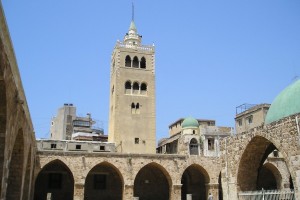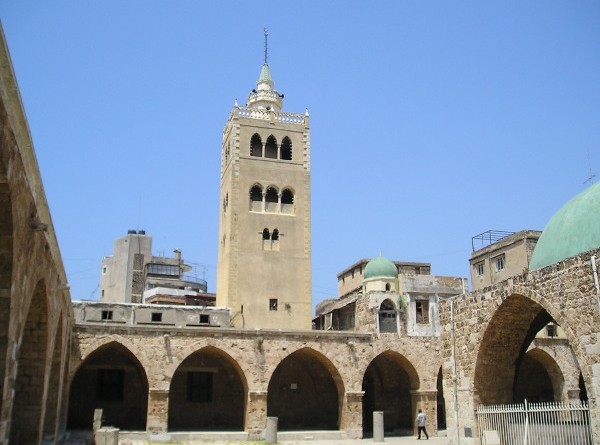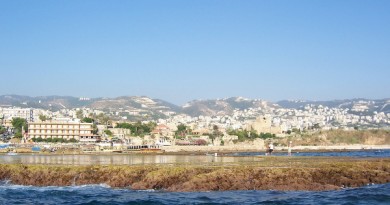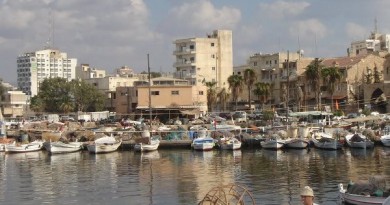Tripoli in Lebanon
 Tripoli is the second-largest city and port in Lebanon, located north of Beirut at a distance of 86 km from the capital. Drive to Tripoli by bus from Beirut, transfer will take approximately half an hour. The city’s population of about 500 thousand inhabitants. 80% of the population are Sunni Muslims, it is the Muslim city in Lebanon.
Tripoli is the second-largest city and port in Lebanon, located north of Beirut at a distance of 86 km from the capital. Drive to Tripoli by bus from Beirut, transfer will take approximately half an hour. The city’s population of about 500 thousand inhabitants. 80% of the population are Sunni Muslims, it is the Muslim city in Lebanon.
Tripoli was founded by the Phoenicians in the 9th century, it had to function as a commercial port. From the Greek name of the city means “triple city”, the name of Tripoli was because at the time was the center of Phoenician confederation which included three more cities of Tyre, Arvada, Sidon. But it should be noted that Tripoli – a very common name at the time, their cities with the same name and is now in Libya, Greece. After Phoenician city belonged successively to the Persians, Romans, Arabs, Crusaders, Mamelukes, Turks.
When Arab commander Mu’awiya arrived in Tripoli the residents in the city was gone, they had previously fled. Then the commander invaded the house Jews who were driven from all over Palestine. Crusaders conquered Tripoli in the 12th century, the period of their rule lasted for 180 years. Which replaced the Mamluks polls Crusaders massacred all the inhabitants of Tripoli, and the city is almost completely destroyed. The new town was built nearby.
Tripoli attractive the rich history and features of medieval architecture and the reign of the Mamluks. In many ways, Tripoli retained its architectural and historic character because it remains the province, this is confirmed by comparing the city with Beirut, the center and some other areas which were destroyed by wars, renovations. Tripoli enchanting picturesque Arab streets, colorful markets and, of course, the friendliness and hospitality of local people. In the local markets you can find everything you want: jewelry, prices are the lowest in the Middle East, fabrics, copper and bronze, national costumes, oriental spices.
The most famous market – El Kharadzha running from the 14th century, and that in general, it should be noted that these areas are not changed for the past 5-6 centuries. Life in Tripoli is calm and measured. Tripoli is fully convey oriental flavor and at the same time, presents a difficult and eventful history of the coast. This is one of the best places to start learning about the history of Lebanon. But when traveling to Tripoli is better to use the services of a guide or buy a good book, to best explore this city.
The town consists of two parts: the port of Al Mina and in fact most of Tripoli. City center – floor area Sahet-tall, most are concentrated in cafes and restaurants Tripoli. The old part of the city, which stretches from the center to the east, is a maze of narrow streets ornate, rich beautiful mosques, traditional baths, theological schools. The area from the 14th century to the present day work of many artisans, creating just great stuff. Old Town has preserved monuments Mamluks, the most famous of them Taynal Mosque (1336), decorated with marble of different colors, Burtaziya mosque, school, Kvartavviya Madrassa (religious school), St. John’s Church, the largest baths Tripoli cad El Zhadid that do not work for about 40 years.
The new part of Tripoli (the port area of Al-Mina) contrasts with the calm way of life in the old town. Wide boulevards, modern architecture of the area completely, there are many trendy shops, exclusive restaurants.
Now more about what is sure to be found in Tripoli, its main attractions. One of the main attractions of Tripoli – the castle of Saint-Gilles, Count of Toulouse, which hit the city by the Mamluks. The castle was built in 1289, it is located on a rocky hill with a wonderful view of the old part of Tripoli. The castle itself is fascinating in its power, in addition, many of the Saint-Gilles kept in good condition. Visit the castle daily from 9.00 to 18.00 (16.00 in winter). In the center of town is the Grand Mosque. It was rebuilt during the Mamluk (1315) from St. Mary’s Cathedral, built in the 12th century crusaders: the belfry of the cathedral was the minaret of the mosque, and the place baptistery built a school-madrasa al-Kartauiya, the building which today is one of the most elegant in Tripoli, which promotes a combination of black and white in the design of the facade.
The mosque has a very elegant interior and exterior decoration, some elements can be seen Lombard style. Near the madrassas are the most ancient in Tripoli, Turkish baths Hammam El-Abed, built in the 17th century. However, despite its age, the baths are working now. Even if you are not a fan of take a steam bath, we recommend still Hammam El-Abed, for the interior to some extent also a museum.
Upon entering the room, you are in the first place, you will see a fountain, around which are already placed benches and locker rooms. All done in the Turkish style. Noteworthy is the caravanserai Khan El Sabuni (soap yard). Since ancient times, then stopped merchants from Europe who came to Lebanon for the world famous olive soap. Later a little soap factories. Buy soap in Khan El Sabuni can now, for this work in a number of special shops.
A little further south is the oldest mosque of Tripoli – Abdel Wahid Mosque, built in 1306. Nab Al Meena great place for walking, you can enjoy beautiful views of the city and beautiful sea views. In one of the many cafes on the waterfront recommend tasting seafood. On the waterfront of Al-Mina also offers you a boat trip on the sea or on one of the islands. The largest island near Tripoli – Palm. On this island in 1922, created the National Park, where you can see the green turtles, rare birds and animals. Is located near the banks of the lion’s tower, built in the 15th century by the Mamluks to protect the city from the sea. The modern name of the tower was in the 19th century, then the ornaments with lions adorned the entrance to the tower.
The hotels and beaches are concentrated in the southern part of Tripoli. Hotels in Tripoli there for every taste and every opportunity. Besides traditional hotels in the city have also private homes hotel.
Lovers of mountain recreation can get from Tripoli to Mount Lebanon. There is a resort Cedars – the highest mountain in Lebanon, the area now protected. Actually Lebanon is famous for its wonderful pine forest, no wonder it is a tree is a symbol of the country. Since ancient times, cedar wood is widely used in construction, it has led to the fact that in our time the cedars in Lebanon there was very little, so they are under the state protection.
Tripoli is the capital of Lebanon oriental sweets, so visit pastry shops – a mandatory part of the journey through the city. In restaurants and cafes can enjoy national Lebanese cuisine. In Tripoli, make a delicious orange juice squeezed from both our usual yellow orange, and from a special kind of citrus – blood oranges. In Tripoli, are also various fast food network in which you can quickly and inexpensively to eat.
Rest in Tripoli will be saturated, but at the same time, serene, making it possible to mix a large number of attractions and peaceful rhythm of life of the city. The tourist infrastructure is great in this developed city, and all the conditions are there to make your stay even more comfortable.




